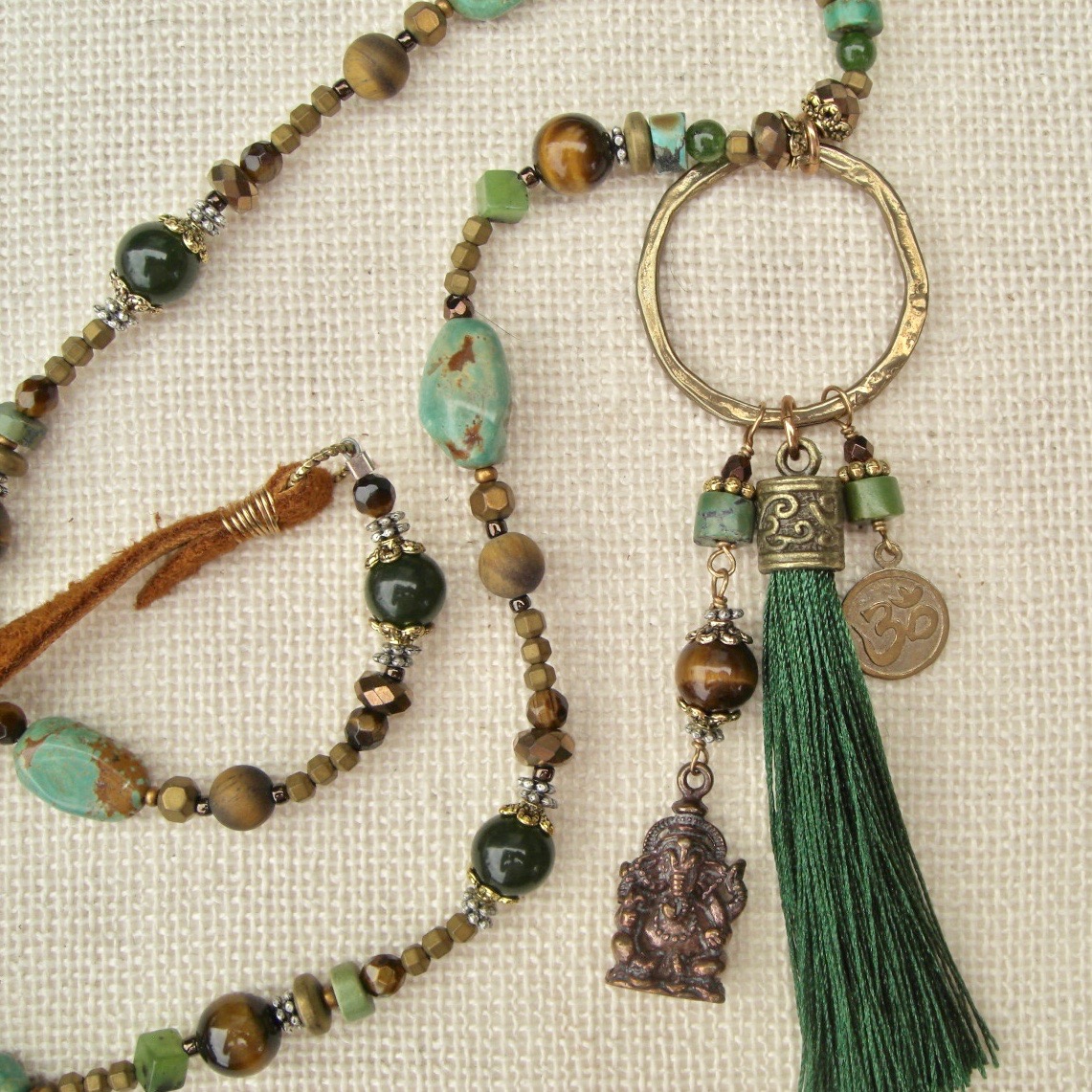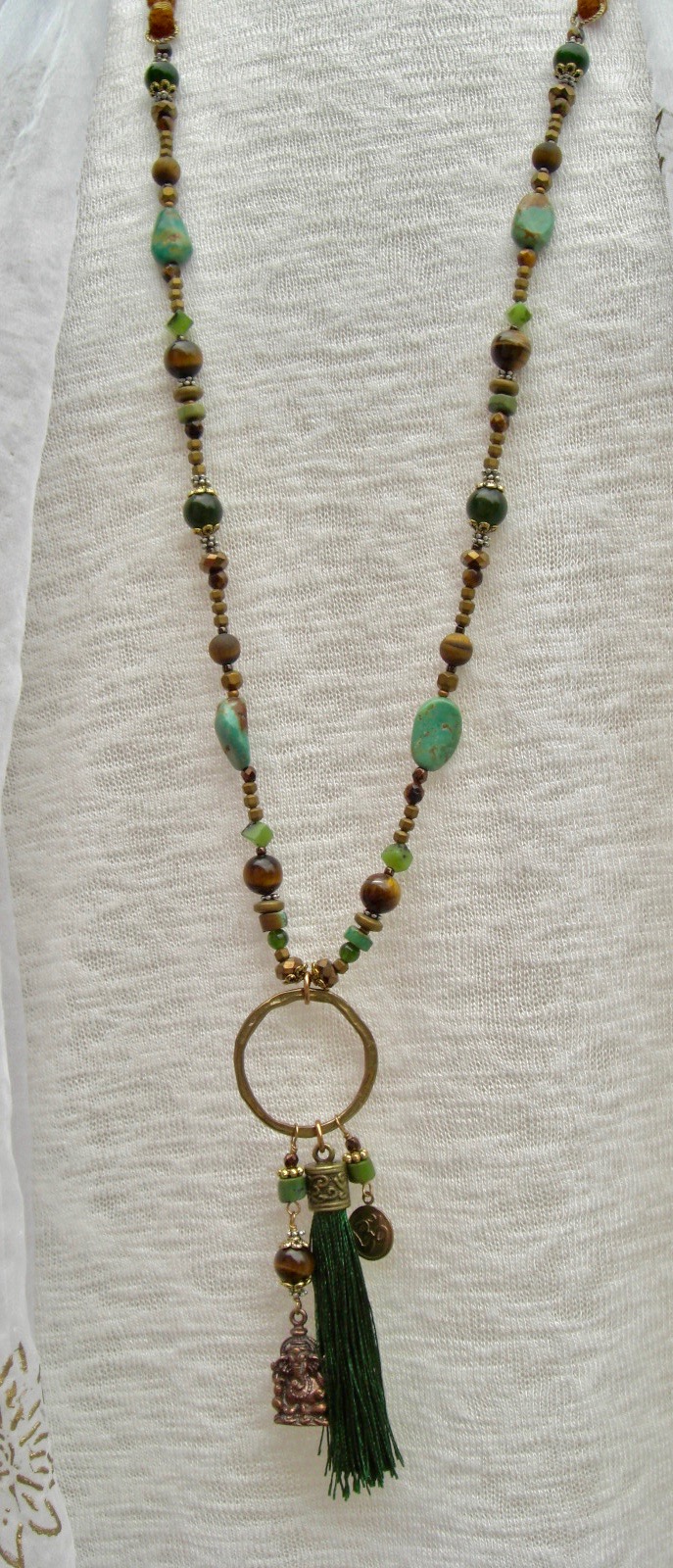Description
Multi-charms and gemstones add character to this unique leather necklace.
Jade– Generates divine unconditional love. Assists one in being in touch with one’s desires. Helps in building the bridge to create dreams into reality. It’s mainly considered as a symbol of serenity, tranquility, and purity. It’s a stone that’s believed to bring in good luck, friendship, peace, and harmony. Jade is also known as a protective stone because of its abilities to ward off the negative energies.
Tiger Eye– Evokes brightness and optimism. A stone of protection, Tiger Eye brings good luck to the wearer. It has the power to focus the mind, promoting mental clarity, assisting us to resolve problems objectively and unclouded by emotions. Particularly useful for dispelling fear and anxiety.
Turquoise– Excellent stone for spiritual receptivity and awareness. A grounding stone that provides strength and protection. Turquoise is among the crystal healing master stones. According to followers of the New Age, the healing powers of Turquoise can benefit the whole body, with special strengths in healing ailments of the immune, respiratory, waste and skeletal systems.
Hematite- A grounding stone that balances the yin-yang energies. Hematite endows us with courage, willpower, confidence, and vitality while dissipating negative energy. Hematite stimulates mental concentration and focus and helps one to overcome compulsions and addictions.
Bronze: An alloy consisting mostly of copper (the bronze we use is over 90% copper) and shares the same healing properties. Bronze has been used in the manufacture of various types of medals for centuries and is known in contemporary times for being awarded for third place in sporting competitions and other events. The later usage was in part attributed to the choices of gold, silver, and bronze to represent the first three Ages of Man in Greek mythology: the Golden Age, when men lived among the gods; the Silver age, where youth lasted a hundred years; and the Bronze Age, the era of heroes, and was first adopted at the 1904 Summer Olympics.


